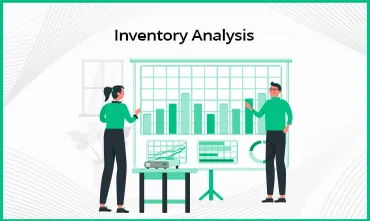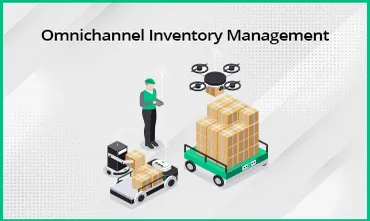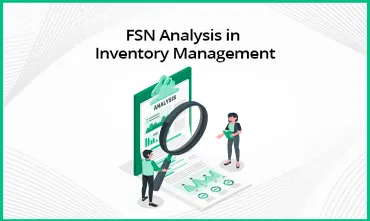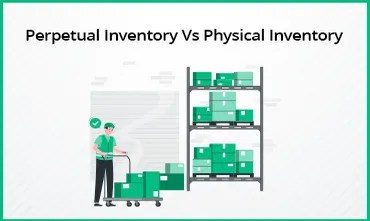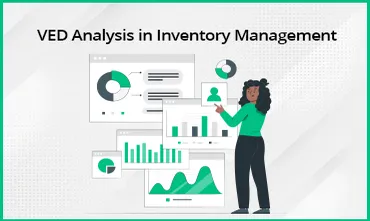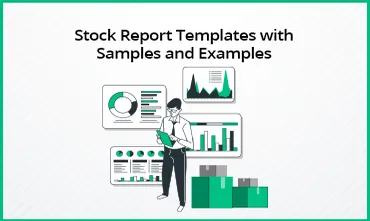This blog post will help you take a closer look at what is work-in-progress, its significance, and how it is calculated. The manufacturing process usually consists of three stages which include raw materials, work-in-progress (WIP) goods, and finished goods. In the manufacturing sector, business owners face problems in keeping records of in-process products that are lying in the middle of the production stage.
WIP items cannot be counted as pure raw material as they are undergoing transformation, nor can they be mentioned as finished products as they are not ready for sale yet. That's also why work-in-progress accounting can get tricky. However, if you are an SME manufacturer, don't worry, we have covered all aspects related to work-in-progress inventories and how they should be managed. Stay tuned and read on!
Understanding Work-in-Progress (WIP)
The term work-in-progress refers to partially completed products that are not included in the category of raw material, but rather are goods that are ready to be manufactured as finished goods. WIP is usually a term used in manufacturing, construction, and other industries that involves the production or completion of a product. It helps managers to keep track of the production process and monitor the efficiency of the production line.
WIP includes the raw materials, labor, and overhead cost incurred for production, followed by various stages of the manufacturing process. Therefore work-in-progress inventory is considered an asset because raw materials have been used and processed to manufacture these products.
Further, WIP is displayed on the asset side of the balance sheet because it affects the manufacturing cost incurred in the production of in-process goods. Work-in-progress includes all the costs of raw materials, labor, and other expenses. Thus, work-in-progress accounting outlines all expenses required for final goods production. It also includes the labor cost involved in the manufacturing process where the product has not reached the final stage. All these accountabilities are taken care of by different methods varying from company to company for efficient WIP inventory.
Having understood what is work-in-progress and how organizations manage its cost, let's understand the examples of WIP to know its functioning, followed by the importance of minimizing WIP inventory items for business efficiency.
Example of Work-In-Progress
Work-in-progress examples will help you get a clear picture of semi-finished goods management and help you to enhance overall business productivity. So, let's assume the case of ABC mobile manufacturing company. The company uses displays, motherboards, packing materials, and chargers as raw materials to assemble them to make new products.
ABC company has raw materials inventory worth Rs. 100,000 from the previous year. The company again purchases raw materials worth Rs. 300,000 for manufacturing new mobile sets for the current year.
While manufacturing, the company is left with an unfinished inventory worth Rs. 150,000 at the end of the year, which also counts the labor cost.
All these three figures are used to calculate the WIP and kept on the asset side in work-in-progress in the balance sheet. Further, these values are transferred in the incurred cost to the balance sheet.
Why Is It Important to Minimize Work-in-Progress Inventory Items?
Minimizing work-in-progress inventory in production helps to simplify the accounting process. The minimum amount of in-process goods reduces clutter in the production area, helping to increase manufacturing efficiency. One can easily identify the likelihood of defective goods and accumulate them to lower the inventory cost by clearing incomplete goods.
Additionally, very few lenders accept WIP inventory as collateral because it's difficult to sell partially complete items. So, minimizing work-in-progress items in the financial statements enables businesses to secure loans easily. This may help to improve overall productivity and speed up the manufacturing process while reducing labor costs for your business.
Further, to avoid wastage and reduce manufacturing costs, it's essential to minimize the amount of WIP inventory before reporting. All the WIP products should be calculated accurately; let's see how WIP is calculated in the next section.
How Is Work-in-Progress Calculated?
After a detailed understanding of what is work-in-progress with all the details and its importance, it's time to understand the calculation. It is an important aspect of accounting to manage the balance sheet.
Various methods are used to calculate the value of the work-in-progress inventory. All the calculations are represented in percentages that include the labor cost, total overhead costs, and the materials incurred for the production. However, the standard work-in-progress formula is as mentioned below.
WIP Inventory = Raw Material Inventory (at the start of the year) + Purchases made during the year - Unfinished Inventory
This formula will help you to accurately calculate WIP. However, you can use software like TranZact inventory to centralize all the information for WIP calculation in real time.
How Do Organizations Use Work-in-Progress?
Work-in-progress consists of a separate line item in a company's balance sheet. Companies perform two methods to calculate the WIP inventory to close their account. If the quantity is negligible, they can incorporate all the inventories in a single line item. Else the organization tries to lower the progress inventory as the reporting period approaches.
Organizations use various methods to solve these issues, some of which follow the below-given conditions based on work-in-progress accounting for services or for goods. All the WIP inventory can be processed accordingly and transferred to the finished goods category before closing. This helps to simplify the work-in-progress accounting entry and provide accurate results for inventory management. However, this method can only be used if the amount of inventory is too low or it can be defined in a single line item.
Second is the usage of work-in-progress accounting standards where the average percentage of in-process items is calculated. If too many items are left in the in-process inventory, then the resultant figure may be the approximate value after accounting for wasted or obsolete produce. Hence, the calculation may become inaccurate.
Automating the calculation process can be the solution to estimating the correct value of the WIP inventory. An automated inventory management software helps by simplifying complex inventory and WIP calculations and reporting.
What Is the Difference Between Work-in-Progress and Work-in-Process?
The terms work-in-progress and work-in-process are both used by professionals and are interchangeable as per scenarios. But, both terms are associated with the partially completed goods in the manufacturing process that are ready to transfer into finished goods with slight differences, which are explained below.
The partially completed goods that are almost complete and need a very short period in the manufacturing process, and are transferable to finished goods, are assumed as work-in-progress. On the other hand, unfinished goods that may take a long time to complete before becoming transferable to finished goods are termed work-in-process.
Businesses widely use these terms for work-in-progress construction businesses and consulting projects. They report both types of inventories in the balance sheet with all the information based on production processes, manufacturing process bottlenecks, and allocation of resources, after assessing their minor differences.
How Is Work-in-Progress Different From Other Stages of Production?
There are mainly three types of inventory items that are categorized as per different stages of the manufacturing process. Here, work-in-progress lies in the middle stage of production.
1. Raw Materials: The inventory of supplies that are required to manufacture the product is called raw material. The requirement for raw materials may differ according to the manufacturing industry and their project.
2. Work-in-Progress (WIP): The raw material that is undergoing processing to manufacture finished goods is called work-in-progress. It is the intermediate stage in the manufacturing process, where it is neither determined in the raw material nor in the final product.
3. Finished Goods: The goods that reach the end of the inventory process and can be directly sold to the customers are called finished goods. This is the only item that completes the entire manufacturing process and is ready to dispatch to the market.
Refine Work-in-Progress Goods Management for Smooth Production
Now that we have seen what is work-in-progress, the method of calculation, the accounting of work-in-progress in the balance sheet, and how WIP is different from other stages of the manufacturing process, it's time to look for the right software to automate WIP management. TranZact is a cloud-based platform that helps you to maintain all records of WIP inventory seamlessly!
FAQs on Work-in-Progress (WIP)
1. What is work-in-progress, and why is it important in project management?
Work-in-progress is an important part of the inventory and accounting for unfinished goods that are ready to be transformed into finished goods.
2. How do you manage work-in-progress effectively?
To manage work-in-progress effectively, you need to closely monitor it and lower WIP items. You also need to set up a smooth production cycle based on demand so that all WIP items are converted to sellable goods without delay.
3. What is the relationship between work-in-progress and team productivity?
Efficient work-in-progress management can increase the team's overall productivity by lowering the in-process items and clearing the overall clutter in the manufacturing process.
4. How do you measure work-in-progress in project management?
Two major tracking tools are used to manage projects in WIP. Work breakdown structure (WBS), provides the overview of the project. And the other is the project plan or the risk management plan that helps to estimate the budget and the time.
5. What are the benefits of setting work-in-progress limits?
WIP limits help to reduce the wastage of raw materials, reduce maintenance costs and improve the manufacturing process.
6. How does work-in-progress impact project timelines and budgets?
The unfinished components of any project can increase the labor costs and overhead costs of the project.
7. What is capital work-in-progress?
If any goods are not completed by the date of the balance sheet, all the related costs are added to the capital work-in-progress account.
8. What is capital work-in-progress on the balance sheet?
The capital work-in-progress is displayed in the asset section on the balance sheet because it is considered a capital asset item.
9. What is limiting work-in-progress?
Setting a limit to the maximum amount of work that can exist in each stage of the workflow is called limiting WIP.
10. What is the journal entry for work-in-progress?
The record that accounting professionals use to document the current asset on a company's balance sheet is called a journal entry for WIP.
11. What is work-in-progress in cost accounting?
The work-in-progress which comprises semi-finished goods is considered an asset in cost accounting because resources have been spent on it, but it is not a finished good yet, as of the date of the balance sheet.
12. What is work-in-progress inventory?
Work-in-progress inventory is the collection of unfinished goods that are ready to be processed into finished goods.







